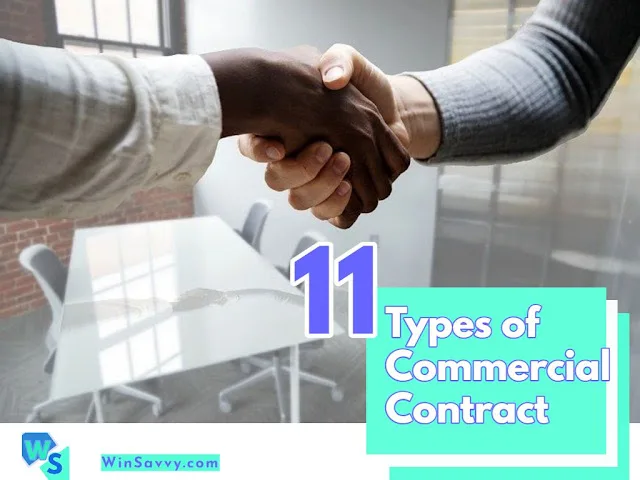| Disclaimer: This article is for informational purposes only. If you require legal help with your contract drafting, send us an email and we will help you out. |
What are Commercial Contracts?
A commercial contract is a legally enforceable instrument that binds one party to either do or not do something. It is utilised by and among businesses when entering into transactions with other parties, such as when buying, selling or leasing products and services, or hiring individuals or employees.
Commercial contracts include the conditions of the agreement, which encompass all relevant details of the transaction being entered into, such as force majeure, covenants, representations, recitals, mitigating circumstances, dispute resolution procedures as well as jurisdiction of the agreement in a court of law.
Check out this article on the essentials of a contract to know more.
Improperly Drafted Commercial Contracts
A breach of contract occurs when one party fails to meet their end of the bargain. Commercial contracts that are not properly drafted and include flaws might jeopardise the agreement specified inside. Therefore, it is best to get it drafted or at least reviewed by a lawyer.
However we do have a definitive guide on how to draft a contract to help you create a contract on your own.
That said, let’s begin –
Different types of Commercial Contracts
There are 11 main kinds of commercial contract.
They are –
- Non-disclosure agreement,
- Employment Agreement,
- Settlement Agreement,
- Co-Founders Agreement,
- Loan Agreement,
- Franchise Agreement,
- Corporate Lease Agreement,
- Advisor Agreement,
- Share Subscription Agreement,
- Shareholder Agreement,
- User Agreement
#1. NDA (Non- Disclosure Agreement)
A non-disclosure agreement (NDA) is a contract that restricts one party from disclosing confidential information to another. A party who shares confidential information with another party must sign an Non Disclosure Agreement to ensure that the information remains private.
NDAs are commonly used in the business world to protect trade secrets, inventions, ideas and other confidential information or simply to protect sensitive information such as personal data and financial information.
When is a Non-Disclosure Agreement Used?
An NDA may be required for any situation where you want to share sensitive information with someone else but don’t want them to share it with anyone else.
An NDA can be used for many different purposes, including:
- Protecting trade secrets, such as formulas, processes or ideas;
- Protecting proprietary information about your business, such as financial data and customer lists
- Preventing employees from taking confidential information and sharing it with competitors after they leave your company
- An NDA can also be used by entrepreneurs who have an idea but do not have an existing product or service yet. Entrepreneurs may want to use NDAs to keep their idea secret until they are ready to launch their business or product.
- Preventing potential merger and acquisition partners who are privy to sensitive internal information regarding your company from using the data or leaking it for their own competitive advantage.
What are the Main Components of an NDA?
#1. First you have to identify the parties to the Non Disclosure Agreement.
Provide the names of the parties, their addresses as well as some other identification details such as a copy of their Identification Cards.
#2. The definition of confidential information in the NDA
Here you have to outline all the information and the aspects of the information that you want to guard as confidential.
Ask yourself –
What exactly constitutes confidential information? What if my company has secret recipes or formulas that I don’t want others knowing about? Is that considered confidential information? And what about my business plans and strategies?
If there are aspects of the information shared that you do not wish to protect as confidential information, then create a sub-section in the agreement titled “Exclusions” and provide the parts that you do not wish to protect as confidential.
#3. The Term of the Non Disclosure Agreement
This part should provide how long does the NDA last as well as whether you can terminate your NDA early and if so, how.
A non-disclosure agreement can be crafted as a separate agreement but is usually inserted as a clause in other forms of commercial contracts.
#2. Employment Agreement
An employment contract is a legal agreement between an employer and employee that sets out the terms and conditions of employment. When a new employee joins a firm, this sort of agreement is made to protect the employer’s rights and obligations. An employment contract is a legal agreement between an employer and employee that sets out the terms and conditions of employment.
An employment contract may be in writing (signed by both parties) or verbal. If the employment contract is verbal, it is still enforceable if it can be proved that there was an agreement between the parties. An employment agreement will state what duties an employee will be required to perform, the salary, benefits and how long an employee is expected to work for the employer.
It also includes other information such as how much notice your employee must give before leaving the job, whether an employee can work overtime, who pays for travel expenses and what happens if either party fails to honour their part of the agreement.
An employment agreement can also have a non-disclosure agreement as a part of the contract so as to protect the trade secrets of the business.
#3. Settlement Agreement
These agreements are made to resolve a disagreement between the parties by reaching an agreement. Under this agreement, the parties agree on the outcome of a dispute. This is done to conserve time and prevent being mired in protracted legal actions that may run indefinitely.
In fact, most individuals and businesses ensure that a settlement agreement is drafted along with a non-disclosure agreement to prevent the settlement from being known to the public.
This is often necessary to protect the branding as well as the goodwill of the parties to the agreement.
#4. Co-Founders Agreement
When a company is founded, this contract is created so that the firm’s founders may decide their ownership and responsibilities in the company. This protects founders’ rights because everything is predetermined, therefore there is less room for a disagreement that might bring loss to other founders.
Further a co-founders’ agreement must set out a clause for vesting of shares. This prevents shares being stuck with a co-founder who may leave without doing any work immediately after founding the company.
As a startup owner, you may think you do not need a co-founders’ agreement, but having one can prevent myriads of disputes cropping up between the founders and endangering the startup. Here’s all about a founders’ agreement.
#5. Loan Agreement
If you take out a loan from a bank, NBFC or even an individual, this Loan agreement is made to ensure that the money taken for the debt is used as per the agreement and repaid within the promised time.
Constituents of a Loan Agreement
A loan agreement provides the terms and circumstances under which the loan was made accessible to the borrower by the financial institution and sets out the objectives for which the loan is taken, how it shall be used, mortgages or securities placed in exchange for the loan.
Requirement of a Surety or a Guarantor for the Loan Agreement
In a loan agreement, the person giving out the loan usually requires you to put forward a guarantor or a surety for the loan. The guarantor or surety must submit an affidavit assuring that he / she shall guarantee the creditor in case of your default.
Further, this allows the creditor to sue the surety in case of default by you, even without having to sue you, thus helping for speedier recovery of money.
Related Read: A similar form of agreement is the financial lease agreement.
#6. Franchise Agreement
A franchise agreement is a contract between two businesses for the purpose of sharing brand identity and other aspects of business in exchange of royalty or certain pre-determined sums of money. Often, it’s not a contract between a company and an individual but rather between two companies.
To establish a new franchise, the Franchisor and Franchisee engage into an agreement outlining their respective responsibilities during the franchise’s establishment and subsequently. In exchange for royalties or an interest in the business, the Franchisor gives certain rights to operate a business using the name/face granted by the Franchisor under this agreement.
Because no corporation has the means to build a shop/office in every place, this sort of contract is most widely employed throughout the world by large businesses to set up shop in several legal jurisdictions.
The main components of a Franchise Agreement are:
1. Franchise term
The length of time for which the franchise agreement will be in place. This can be one year, three years or any other agreed period.
2. Term renewal
The franchisee may have an option to renew the contract after it expires, but only if they meet certain conditions.
3. Royalty fee
The amount you pay to your franchisor each month (or quarter) for using their brand name and marketing materials. This money is used to fund national advertising campaigns and other costs associated with running the business.
4. Advertising fund contribution
You’ll contribute a certain percentage of your sales revenue into this fund, which is used by the franchisor to advertise their brand in local markets where they don’t have stores yet.
5. Restrictive covenants (for example, non-competition clauses, non-disclosure clauses)
This clause helps prevent two franchisees of the same franchisor competing with one another or competing with the franchisee itself. It also bars the franchisee from leaking out sensitive information of the franchisor out to the public.
#7. Corporate Lease Agreement
A corporate lease agreement is a contract between a company and a landlord. This kind of contract allows the company to rent office space or other commercial property for a period of time.
A corporate lease agreement is used when:
1. The company needs to rent office space or other commercial property.
2. The company does not have enough cash to pay for the entire purchase price of the property. The seller allows the buyer to make monthly payments on the property until it is paid off in full.
This arrangement is also called a finance lease agreement, lease-purchase agreement which is sometimes called a “lease with an option to buy” (LTO).
3. A corporation needs to rent office space or other commercial property from another corporation or person who owns it. In this case, there are two parties involved in entering into the contract: The tenant (the person renting) and the landlord (the person renting out).
The main components of a corporate lease agreement include:
- The parties’ identities and addresses;
- A description of the property being leased;
- The term of the lease (the number of months or years);
- The amount of rent and when it’s due;
- What happens if the tenant doesn’t pay the rent on time;
- Who is responsible for maintenance and repairs on the property during the lease term;
- Security Deposit;
- Lease Renewal Options;
#8. Advisor Agreement
When a business engages an adviser for business advice or financial advice, this contract is created to outline the advisor’s services as well as the terms and circumstances of the agreement.
Why You Need an Advisor Agreement
An advisor agreement is used when you need professional advice from someone who isn’t your employee. For example, if you hire an accountant to manage your business finances, working capital etc., or a lawyer to draft your will, both of those professionals would be considered advisors for the purposes of this contract.
An advisory agreement can also include professionals who aren’t professionals but offer their time for a fee in exchange for access to their expertise — for example, a consultant who helps businesses increase their sales through digital marketing strategies could be considered an advisor under this framework.
The main components of an advisor agreement include:
- Introductory section. This is where you’ll find the date the agreement was signed by both parties and a description of the services to be provided by your advisor.
- Services to be performed by your financial advisor. This section explains what your advisor will do for you, including any special circumstances or extras that may apply to your relationship with them.
- Compensation for services performed by your financial advisor. This section will specify how much money you’ll pay for their services and how often those payments will be made (for example, in monthly installments). It should also include information about how much money they’ll make if you choose to sell investments during or after their employment.
- Client responsibilities. This section specifies what you need to do on your end in order for the relationship between you and your financial adviser to work properly (for example, keeping records up-to-date).
There are also some other ancillary elements that you need to get right for an advisor agreement. This article has a detailed list of the clauses.
Founders’ Institute has a great template that you can use.
#9. Share Subscription Agreement
When a company has agreed to sell a specified number of shares to a person at a specific price, this kind of contract is used.
This type of contract is often used for private placement of shares and bringing in shareholders to a private company. When a company is trying to get funding, especially in countries like India and the US, this is the first set of documents that a Limited Liability Company provides to an investor to confirm the allocation of shares.
Here’s a definitive guide on share purchase agreement applicable internationally and here’s a guide on stock purchase agreement applicable in the US.
#10. Shareholder Agreement
These agreements are far more sophisticated and extensive than a share purchase agreement. It is created by a shareholder and an investor. When an investor invests in a company, this contract guarantees his rights and power in that company. It also aids in the resolution of any future disputes and guarantees that no shareholder is treated unjustly.
It also sets out a relation between the shareholder and the investor, such as actions which a shareholder can take or not take, or restrictions over the larger shareholder’s powers.
#11. User Agreement
A user agreement is a legal contract between a user and a website or service provider. The user agrees to certain terms and conditions before signing up for the service.
A user agreement can be very simple or extremely complex, depending on the needs of the site owner or service provider. Some websites have an extensive list of rules and regulations that you must agree to in order to use their services. Other sites have very few restrictions and simply ask you to abide by common sense rules, such as not posting offensive content or spamming other users.
When Is a User Agreement Used?
The purpose of an user agreement is to protect both parties involved in the transaction: The website owner wants to make sure that they are protected from liability and lawsuits if something goes wrong with their business, while the customer wants to know what they’re getting into before signing up for any service.
Here are some examples of user agreements that can help you draft your own user agreements for your business needs.
Wrapping It Up on the Types of Commercial Contracts
As you can see, commercial contracts are of varied types. In fact, while these are 11 important types, there can be very many more, such as terms of use agreement, manufacturing contract, etc.
Considering the wide variety of clauses that can crop up in any of these types of commercial contracts, it is important that you take the help of a lawyer when drafting one. In fact, if you need help, feel free to schedule a free consultation and we will draft the contract for you.
If you liked the article, do give it a share and if you have any questions, let us know in the comments and we will get back to you!
Read Next:
- Dispute Resolution for Smart Contracts: Challenges and Opportunities
- Original Equipment Manufacturing Agreement: Why and how to use them


















